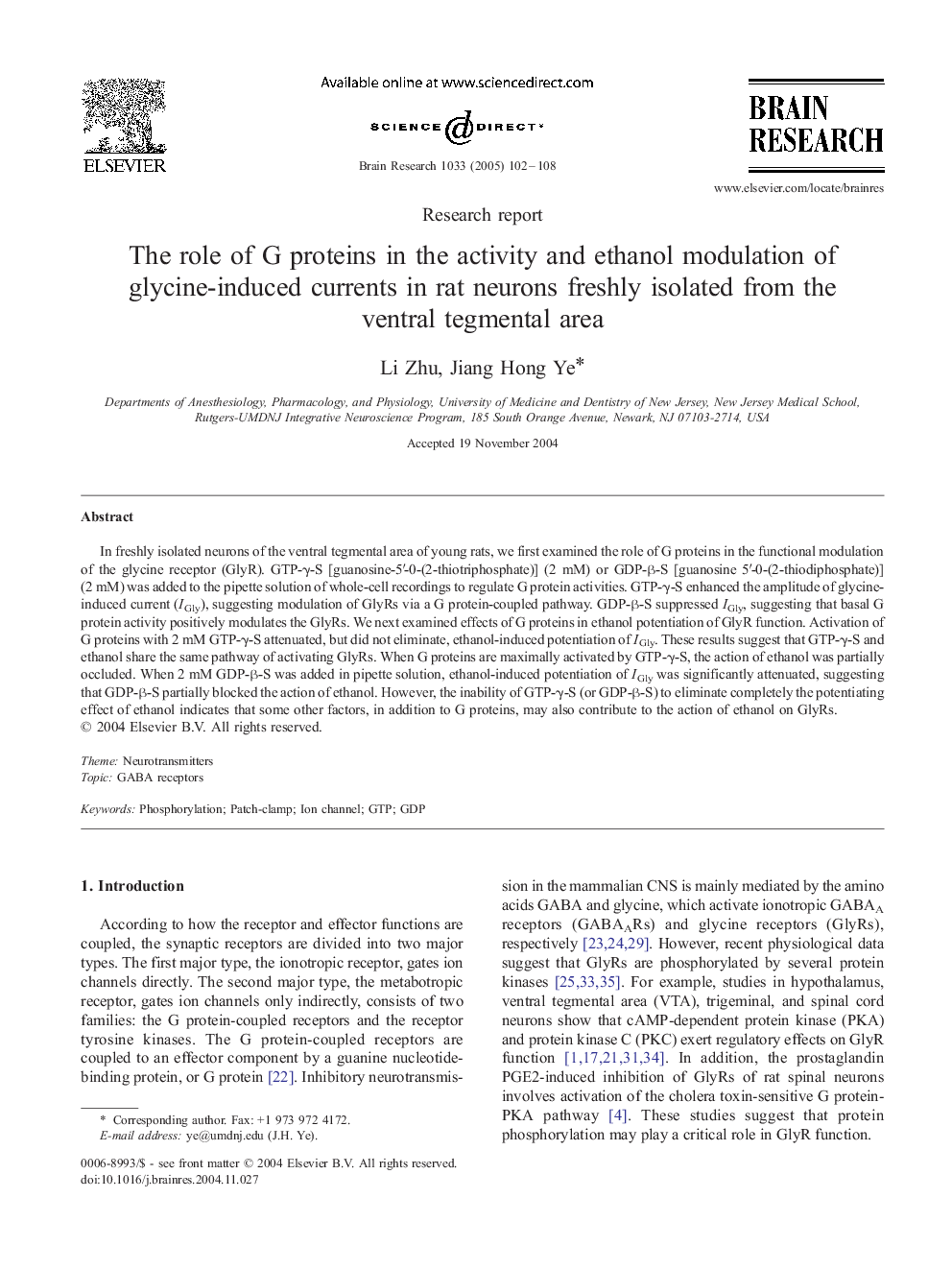| Article ID | Journal | Published Year | Pages | File Type |
|---|---|---|---|---|
| 9416760 | Brain Research | 2005 | 7 Pages |
Abstract
In freshly isolated neurons of the ventral tegmental area of young rats, we first examined the role of G proteins in the functional modulation of the glycine receptor (GlyR). GTP-γ-S [guanosine-5â²-0-(2-thiotriphosphate)] (2 mM) or GDP-β-S [guanosine 5â²-0-(2-thiodiphosphate)] (2 mM) was added to the pipette solution of whole-cell recordings to regulate G protein activities. GTP-γ-S enhanced the amplitude of glycine-induced current (IGly), suggesting modulation of GlyRs via a G protein-coupled pathway. GDP-β-S suppressed IGly, suggesting that basal G protein activity positively modulates the GlyRs. We next examined effects of G proteins in ethanol potentiation of GlyR function. Activation of G proteins with 2 mM GTP-γ-S attenuated, but did not eliminate, ethanol-induced potentiation of IGly. These results suggest that GTP-γ-S and ethanol share the same pathway of activating GlyRs. When G proteins are maximally activated by GTP-γ-S, the action of ethanol was partially occluded. When 2 mM GDP-β-S was added in pipette solution, ethanol-induced potentiation of IGly was significantly attenuated, suggesting that GDP-β-S partially blocked the action of ethanol. However, the inability of GTP-γ-S (or GDP-β-S) to eliminate completely the potentiating effect of ethanol indicates that some other factors, in addition to G proteins, may also contribute to the action of ethanol on GlyRs.
Related Topics
Life Sciences
Neuroscience
Neuroscience (General)
Authors
Li Zhu, Jiang Hong Ye,
